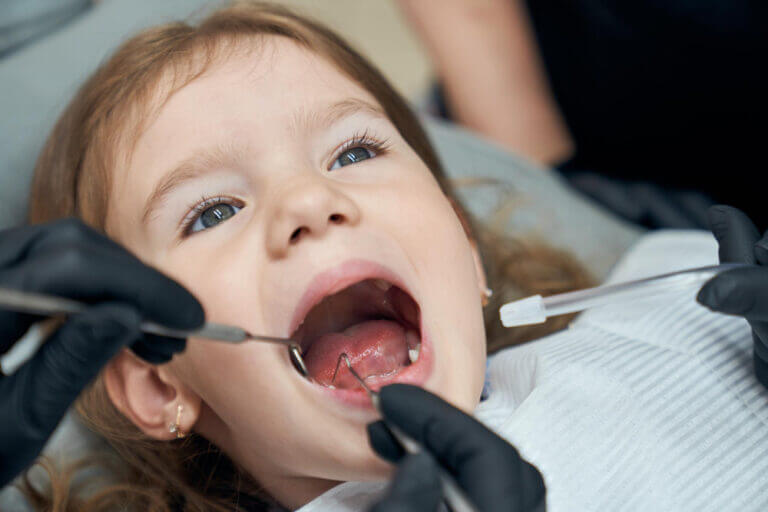Gingivitis and gum disease in children
Gingivitis and gum disease, also known as periodontal disease, can affect children as well as adults. These conditions involve inflammation and infection of the gums and supporting structures of the teeth. While gum disease is less common in children than in adults, it’s essential to recognize the signs, take preventive measures, and seek treatment when necessary. Here are key points about gingivitis and gum disease in children:
- Gingivitis:
- Gingivitis is the earliest stage of gum disease and is characterized by inflammation of the gums.
- It is typically caused by the accumulation of dental plaque—a soft, sticky film of bacteria—on the teeth and gums.
- Signs of gingivitis in children may include red, swollen gums that bleed easily, especially during toothbrushing or flossing.
- Gingivitis is generally a reversible condition with proper oral hygiene and professional dental cleanings.
- Gum Disease (Periodontal Disease):
- Gum disease is a more advanced form of gum inflammation that can lead to damage to the supporting structures of the teeth, including the bone.
- In children, gum disease is less common but can occur, particularly if gingivitis is left untreated.
- Signs of gum disease in children may include gum recession (gums pulling away from the teeth), pockets forming between the teeth and gums, and even tooth mobility or loss.
- Causes:
- Poor oral hygiene practices, including inadequate brushing and flossing, are the primary causes of gingivitis and gum disease in children.
- Other factors that can contribute to these conditions include genetics, certain medical conditions, medications that reduce saliva production, and conditions that compromise the immune system.
- Prevention:
- The prevention of gingivitis and gum disease in children involves the following:
- Encouraging regular and proper oral hygiene practices, including brushing teeth twice a day with fluoride toothpaste and flossing once a day.
- Monitoring your child’s diet to limit sugary foods and drinks, which can contribute to plaque buildup.
- Scheduling regular dental check-ups and cleanings to detect and address gum issues early.
- Providing fluoride treatments and dental sealants when recommended by a dentist.
- The prevention of gingivitis and gum disease in children involves the following:
- Treatment:
- Treatment for gingivitis and gum disease in children typically involves improving oral hygiene practices and, in some cases, professional dental cleanings.
- More advanced cases of gum disease may require more intensive treatments, such as scaling and root planing (deep cleaning) or other procedures to manage the condition.
- Education and support for maintaining good oral hygiene at home are essential components of treatment.
- Prognosis:
- Gingivitis is generally reversible with proper care and does not usually lead to long-term issues.
- Gum disease can lead to more significant problems if left untreated, including tooth loss. Early detection and intervention are crucial for managing and preventing complications.
Parents and caregivers should be vigilant about their child’s oral health, starting with establishing good oral hygiene habits at an early age and seeking regular dental care. If you notice any signs of gingivitis or gum disease in your child, consult a dentist promptly for evaluation and appropriate treatment.
------------From our Sponsors------------









